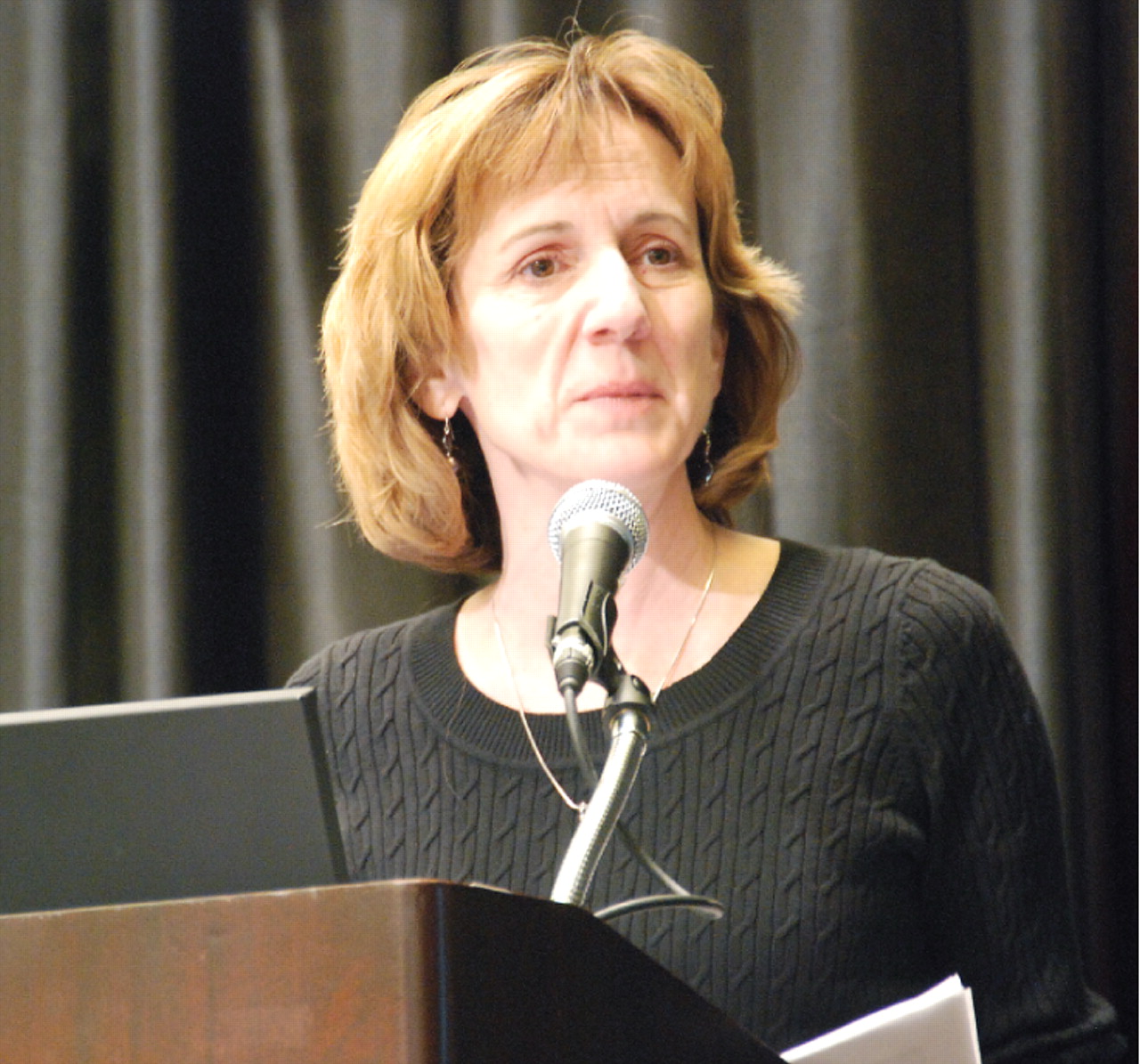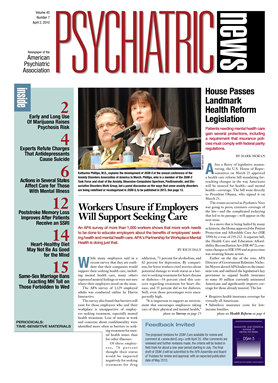Three researchers offered updated views on anxiety treatment and diagnosis from a developmental perspective at the annual conference of the Anxiety Disorders Association of America in Baltimore in March.
Among children, anxiety disorder is at least as common as depression and ADHD, according to Ron Rapee, Ph.D., a professor of psychology at Macquarie University in Sydney, Australia.
There are few demographic correlates to the disorder, he said. Socioeconomic status, marital status, education level, ethnicity, and family size do not seem to play a role in prevalence. The condition appears more often in girls, but boys are more likely to be in treatment.
The prime risk factors appear to be anxious, overprotective parents who model fearful reactions and an inhibited temperament with an avoidant/withdrawal coping style, she said.
One laboratory experiment placed 24 mother-child pairs in a room. The babies were between 12 and 14 months old; half had anxious temperaments, half did not.
The mothers were trained to act either anxious or not anxious. Then the researchers sent a strange man into the room to talk to the mother for a few minutes. The man then turned and approached the child. If the mother had acted confident, both anxious and nonanxious babies responded equally. But anxious behavior by the mother set off high avoidance behavior in the children, and more so in the more fearful cohort.
Preventing anxiety disorders appears to be possible by intervening with the parents, said Rapee. He described an Australian program using cognitive-behavioral therapy that involves both children and parents. It has reduced symptoms by teaching parents to be less protective, allowing their children greater exposure to potentially stressful situations, and using psychoeducation and cognitive restructuring, he said.
Hormones Complicate Women's Treatment
Once children become adults, risk factors change. Margaret Altemus, M.D., an associate professor of psychiatry at Weill Medical College of Cornell University in New York, has studied the hormonal and sex-related issues of anxiety in women.
As women move through their life cycle, there is much hormonal variation during their menstrual cycles and childbearing years, said Altemus.
Anxiety may present only in the luteal phase or more generally as an exacerbation of preexisting illness, she said. Several treatments can be used for luteal-phase symptoms like tension, hypersensitivity to stimuli, or irritability.
Both SSRI antidepressants and placebos lower premenstrual symptoms within three hours of administration, said Altemus, but only SSRI treatment maintains that reduction beyond three hours.
Benzodiazepines or oral contraceptives with drosperinone taken during the luteal phase may help. Calcium (600 mg bid) across the cycle appears to help. There are no published trials of vitamin D for reducing anxiety, although there is a drop in levels of the vitamin during the premenstrual week, and there is some indication that 2,000 IU/day of vitamin D reduces symptoms of premenstrual syndrome. Continuous-hormone contraceptives may help eliminate hormonal shifts. Exercise may be effective at reducing premenstrual syndrome symptoms, too.
Physicians treating anxiety in premenopausal women must always assume the possibility of pregnancy, especially since 50 percent of pregnancies are unplanned, said Altemus.
In cases in which preexisting anxiety is exacerbated during the premenstrual period, Altemus recommend using full-cycle treatments, increasing the SSRI or dose, or using psychotherapy.
Generally, many women want to minimize medication use during pregnancy, but they and their physicians should carefully weigh the potential effects of anxiety as well as medication on the fetus or baby. Nontreatment of anxiety may lead, in some cases, to less adherence to prenatal care, poor nutrition, and even prematurity.
If the decision is to stop medication, it is best to taper patients off gradually and substitute psychotherapy to compensate.
The bulk of the evidence supports use of sertraline or paroxetine during pregnancy; teratogenic risk of antidepressants and benzodiazepines is very low, she said. However, about 50 percent of newborns exposed in utero to SSRIs exhibit transient irritability and increased startle. Higher maternal doses of benzodiazepines may leave the newborn with irritability or respiratory difficulties, and any cognitive effects are unknown.
During lactation, drug levels in breast milk are about equal to those in the blood and so are ingested by the baby at lower levels (after metabolism) than in pregnancy. Medications with a short half-life may be preferred. If desired, women may forgo or reduce breastfeeding to lessen the baby's exposure.
If the decision is made to wean the baby, the weaning should be done gradually, according to Altemus. Animal studies and some research in humans suggest that rapid weaning may worsen anxiety.
Risks of anxiety may increase after age 45 or following ob/gyn treatments like surgically or drug-induced menopause, use of beta-agonists to stop premature labor, or use of metaclopramide to stimulate milk production.
Short-term hormonal replacement can relieve depression during perimenopause, but not after menopause, she said.
Treating Older Adults for Anxiety
In older adults, anxiety can lead to increased disability, reduced functional status, more health care costs, and increased mortality, said Melinda Stanley, Ph.D., a professor and head of the Division of Psychology in the Menninger Department of Psychiatry and Behavioral Sciences at Baylor College of Medicine and Houston VA Health Services Research.
Prevalence rates for anxiety disorders and generalized anxiety disorder in particular may nearly double among patients with chronic illness, she said.
“When evaluating these patients, clinicians must understand how they experience or express anxiety,” said Stanley.
Older patients show a lower correlation between affect and arousal than younger patients and are more apt to speak of somatic symptoms like gastrointestinal complaints, dizziness, or back pain, for instance. They may avoid psychological language and say they don't “worry” but are “concerned” about their condition, she said. They may have memory difficulties and simply fail to remember symptoms they have experienced before coming to the clinic.
Treatment should begin with a medical evaluation and tests for cognitive impairment and depression, said Stanley. Patients may need education about anxiety and its symptoms, and the language used should be easy to understand.
She has found that most older patients prefer nondrug treatments, possibly because they may be on a number of other medications already, said Stanley. Psychiatrists and therapists of older patients must also work more closely with their patients' other health care professionals and family members to coordinate care, she said.
Antidepressants have a 65 percent response rate among older adults, she said. While benzodiazepines perform better than placebo, cognitive side effects may rule them out as a first-choice treatment.
A meta-analysis of five trials of cognitive-behavioral therapy (CBT) indicated that CBT produced only moderate to small effects comparing group versus individual therapy, she said. Furthermore, the trials had only a limited representation of older adults.
There have been only a few, small, uncontrolled trials for mixed late-life anxiety disorders such as generalized anxiety disorder, panic disorder, or obsessive-compulsive disorder, and the trials had high attrition rates. Many trials included only relatively young “older” patients (65 to 68 years) and so do not convey much information about older cohorts.
Ongoing research is investigating links between anxiety and dementia, executive dysfunction, hoarding, and fear of falling. Trials are also under way of different treatment modalities (exposure for generalized anxiety disorder, combined CBT and medication), settings (home health care), and delivery options (telephone-based treatment).



